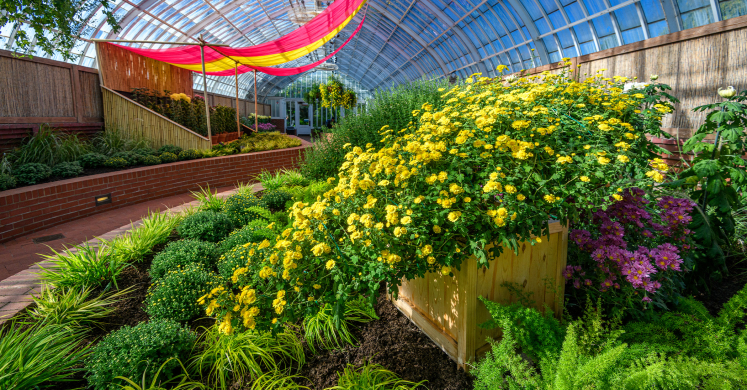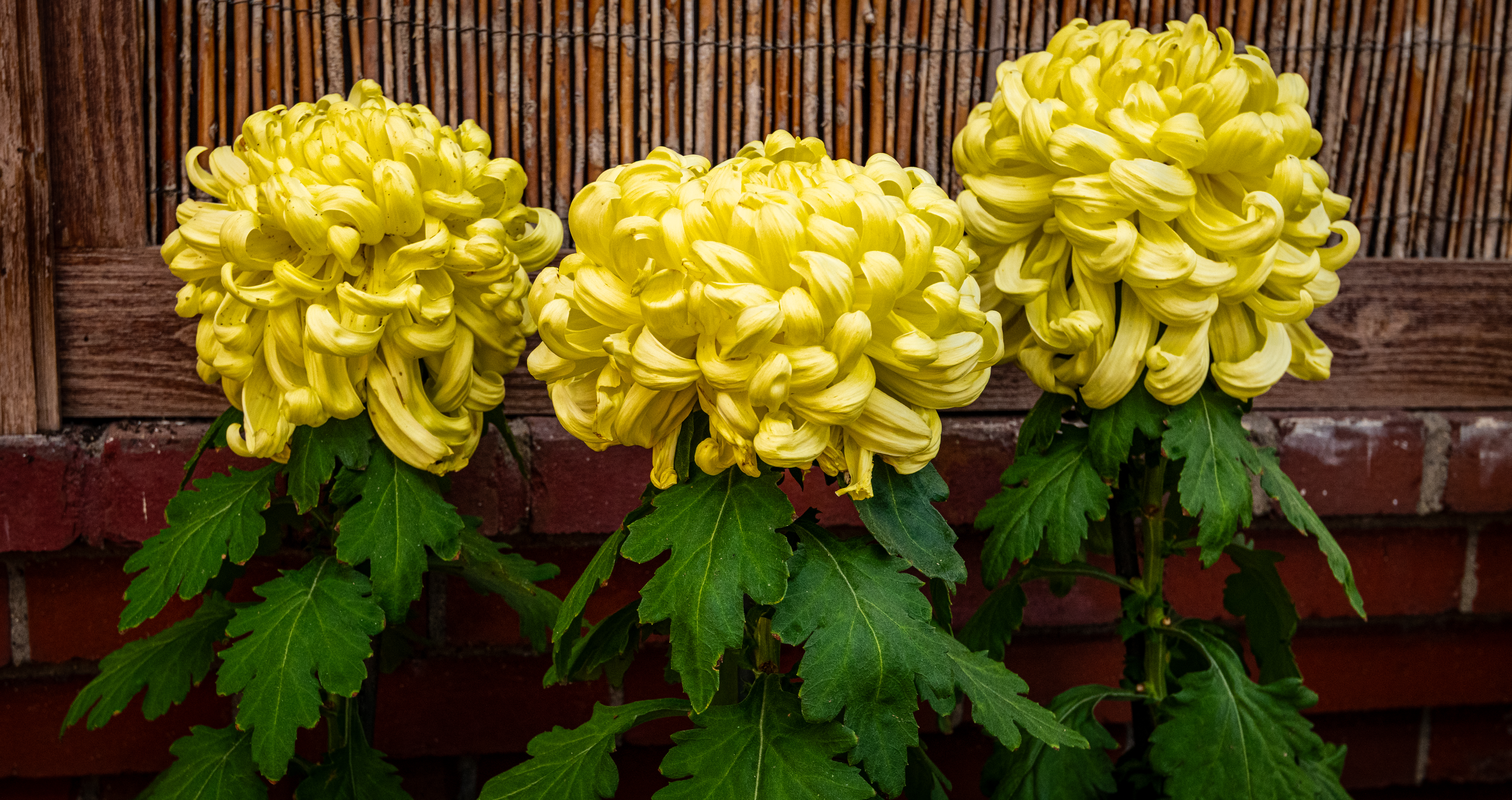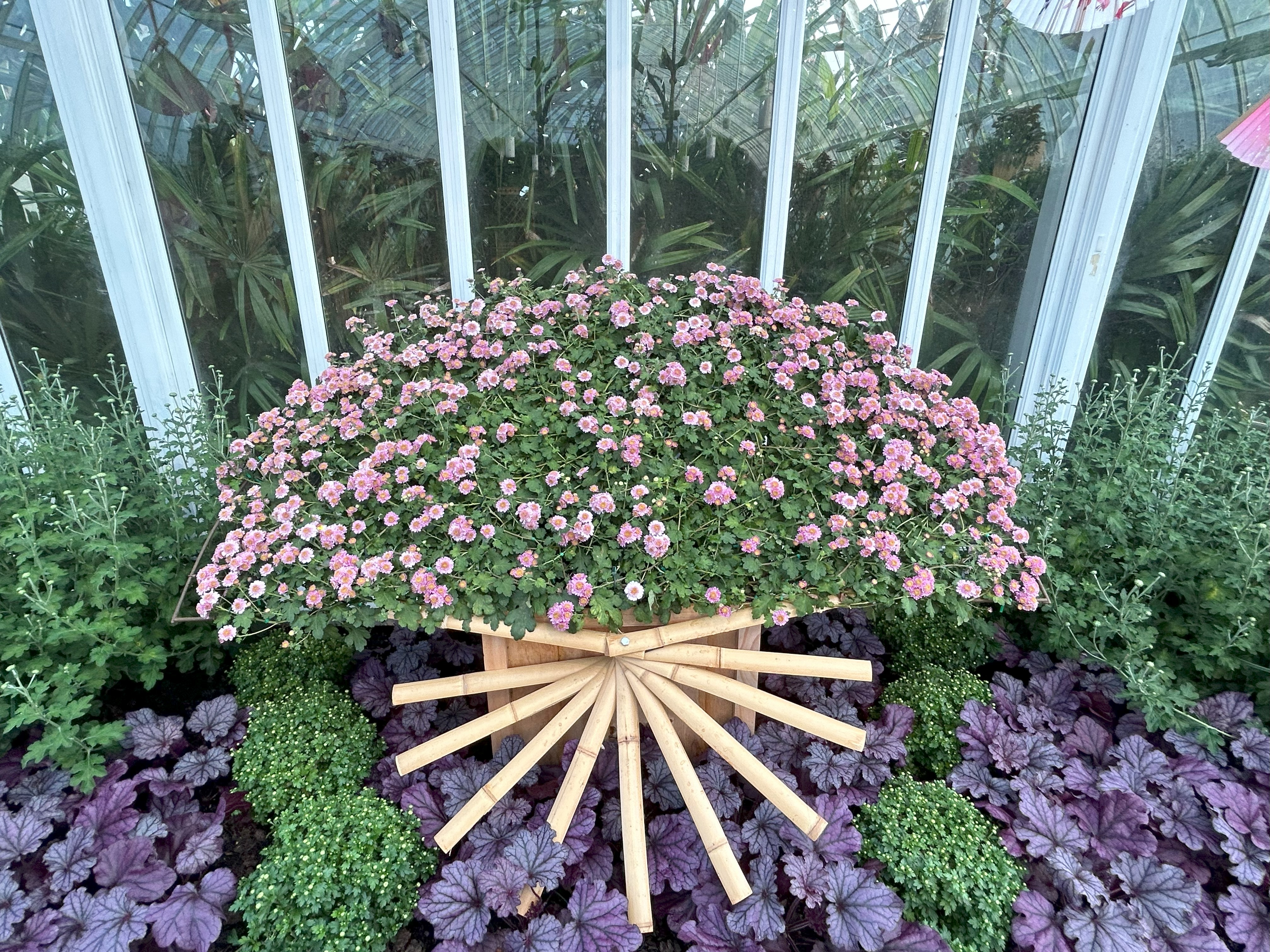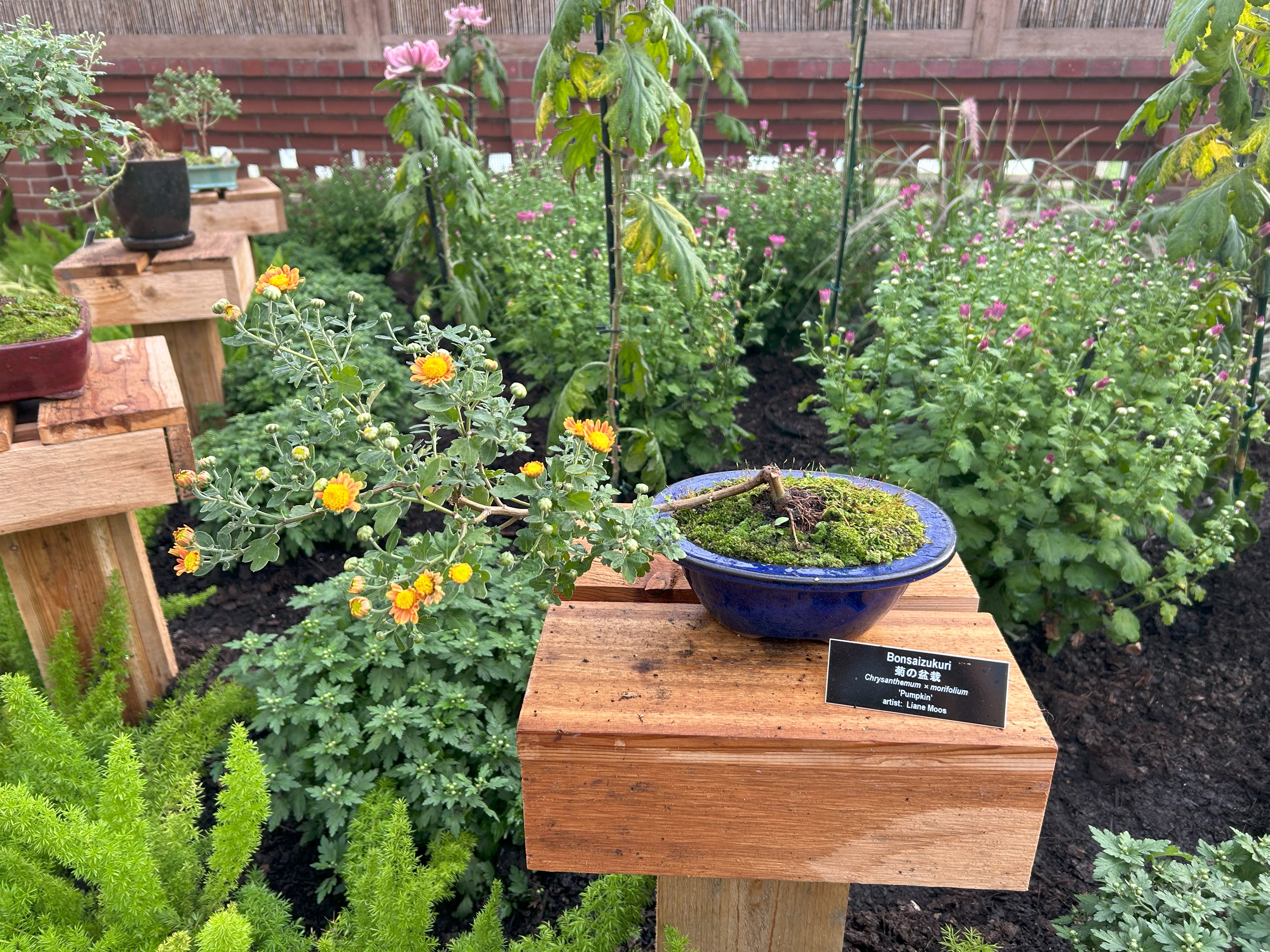Blog

Grown in Japanese Culture
The star of our Fall Flower Show: Visions of Japan, the chrysanthemum, is not only the quintessential fall flower, but also a prominent symbol in Japanese culture. The growing techniques used to display an array of mum varieties throughout this year’s show were carefully chosen to celebrate the flower’s significance in Japan. Production Horticulturists Natalie Campbell and Sonya Korzeniwsky and Senior Plant Procurement, Recorder and Design Associate Laura Schoch shared some details with us about the chrysanthemums in the show and the techniques used to grow them.

In fall flower shows of the past, we typically grow disbuds, sprays, cascades and gnomes. This year, we grew 3-stem disbuds, shields, fans and bonsai in addition to the other forms! “We have adapted the traditional techniques to work in our modern growing conditions and with limitations on the chemicals we can use to regulate the plants’ growth and control pests,” says Sonya. Each different technique utilizes characteristics of the specific cultivators that have been bread to achieve optimal shape, length and flower for the form.
In Japan, intricate growing methods show how, horticulturally, the mum has a long history of being manipulated into shapes like fans, shields and more. Laura Schoch, who has designed the fall show for nearly 20 years, tasked the team with growing fans and shields to fit the theme this year, and they rose to the challenge. This is also the first time Laura has ever seen bonsai chrysanthemums displayed at Phipps, which is exciting for not only the team whose hard work made this new display possible, but also for our visitors!

The unique techniques that were chosen specifically to showcase more traditional Japanese forms are described below by Production Horticulturist Sonya:
- 3-stem disbud (daruma/sanbonjitate): This technique is similar to the disbud form, but instead of one single stem, the plant is pinched so that three stems are trained to produce 3 large blooms. The word ‘daruma’ is derived from a type of doll symbolizing perseverance and good luck. ‘Sanbonjitate’ alludes to the three-flower form, symbolizing heaven, earth, and human.
- Shields (kengaizukuri): This technique involves planting chrysanthemums in a planter that has a metal shield-shaped frame attached. The plants are grown up through the frame, then trained along the shape of the frame, and pinched/sheared to produce many flowers in the shape of the shield.
- Fans: This form uses the same technique as the shields, but the frame is in the shape of a large fan
- Bonsai: This form requires regular pinching, shaping, and wiring to produce a mum that emulates a small tree with little flowers. This year we grew chrysanthemum bonsai in these styles: cascading, semi-cascading, root-over-rock, slanting and informal upright.

To view these captivating chrysanthemum forms and so much more, visit our Fall Flower Show: Visions of Japan open now through Sunday, Oct. 26.

